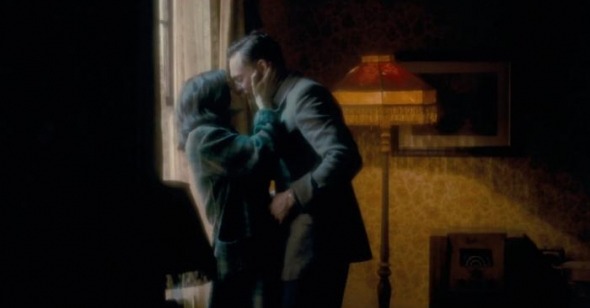Was it just us, or was 2012 a strange year at the movies? The best films already feel hazy in remembrance, as if they all happened in a dream. Half of the movies listed below came out in March or earlier. Plus, three of them are from directors who hadn’t made fiction films for more than a decade (Davies, Carax, Akerman), and one comes from a filmmaker who, according to legal limits placed upon him by an oppressive regime, shouldn’t be making cinema at all. Are we witnessing a return of the repressed? New films from Miguel Gomes and Paul Thomas Anderson, though freely at play with filmic form, seem fascinated by memories and events left buried as well.
If there wasn’t a film in 2012 that overwhelmed the hearts and minds of the RS core team like last year’s The Tree of Life, there were ten lovable oddities that captured our attention, most of them idiosyncratic auteur films, none of which seemed to speak much to each other, but together provide a picture of a world cinema that’s still growing and evolving. As always, we arrived at our final list by polling the magazine’s major contributors for the past year. The film culture at large seemed to want to talk about torture on film, the ethics of a slavery popcorn movie, a Hushpuppy who lived in a bathtub, and a nearly thirty-year-old musical about post-Napoleonic France, but apparently our contributors were too busy enjoying the following movies to care much about such matters. —MK & JR
[Capsules written by Julien Allen, Jordan Cronk, Eric Hynes, Michael Koresky, Benjamin Mercer, Adam Nayman, Jeff Reichert, Chris Wisniewski, Genevieve Yue, and Farihah Zaman.]
![]()
1. The Deep Blue Sea
Another year, another mad rush to rank, award, and translate critical consensus into, at turns, Oscar prognostications or thought pieces about race (Django Unchained, Lincoln) or torture (Zero Dark Thirty), or the death of film (Holy Motors). The Reverse Shot imprimatur has never meant much to the Academy (see our number one of 2010, Alamar—no, really, see it), and this space, in previous years, has rarely been occasion to diagnose the political or cinematic zeitgeist. In 2012, it seemed that before the Thanksgiving leftovers had been finished, the list of the year’s “movies that mattered” had already been whittled down to ten or twelve, thus defining the year in cinema and “what it all meant.” But contemporary cinematic diagnoses be damned: the film in Reverse Shot’s number one slot—a true consensus choice, as it turned out—might have been made in an earlier decade. It was a movie that debuted in American theaters to little fanfare way back in the early spring. And yet if Terence Davies’s The Deep Blue Sea had little to say about the Way We Live Now, in its pristine but emotionally wrenching examination of desire, loneliness, class, social mores, heartbreak, defiance, and love, it seemed to have everything to say about the way we live.
Liberally adapted from a play by Terence Rattigan, The Deep Blue Sea marks Davies’s first narrative film since 2000’s magnificent The House of Mirth. His forced hiatus, a consequence of a lack of funding, hardly altered his idiosyncratic sensibility. The story of Hester (Rachel Weisz), the wife of a barrister (Simon Russell Beale) who falls in love with an RAF pilot (Tom Hiddleston) in postwar London, the film opens with a dazzling set piece that shatters and reconstitutes time, distilling the movie’s backstory to a series of vignettes—a suicide attempt, an early flirtation, a love scene—captured with subtly restless camera movements set to Samuel Barber’s “Concerto for Violin and Orchestra, Op. 14.” The love triangle that subsequently unfolds is uniquely, achingly balanced: Davies’s movie seeks nothing more or less than to reveal the damaged souls of three people who each suffer from an impossible love, all of them inhabited with uncommon grace and knowing weariness by his three brilliant leads. The Deep Blue Sea may never be seen as emblematic of the year of its release, but as long as people care about film—that ephemeral physical medium through which Terence Davies has, for thirty odd years, evoked both a specific time and place as well as a universal sense of longing—they will surely have to contend with this sad and strangely uplifting masterwork. —CW
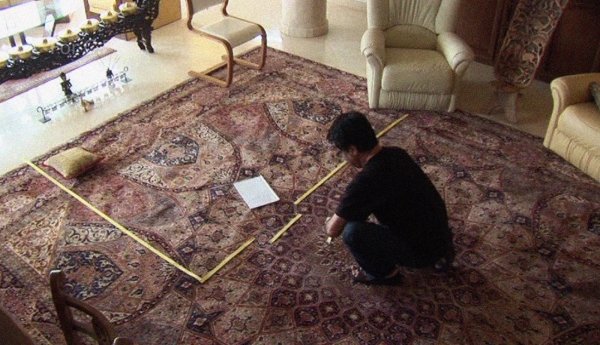
2. This Is Not a Film
Talk about the breadth of today’s cinema: nipping at the heels of our celluloid-shot, purposely old-fashioned film of the year, was this by-necessity technologically radical wonder, captured on iPhone and DV camera. Forget Zero Dark Thirty—this was the most important film of the year, a testament from and to one of the world’s great movie artists, the Iranian master Jafar Panahi, shot in secret within the walls of Panahi’s apartment while the director was under house arrest awaiting appeal on a harsh jail sentence for allegedly creating propaganda opposing Mahmoud Ahmadinejad’s regime. With the brave aid of friend and fellow filmmaker Mojtaba Mirtahmasb, who has since been imprisoned as well, Panahi fashioned a swift, clever, and remarkably unself-conscious self-portrait that at first seems like a vérité depiction of the director’s daily routine, then morphs into an expression of the artist’s innate drive to create, and then imperceptibly reveals itself as another of Panahi’s tricky metacinematic semi-documentaries. Smuggled into the Cannes Film Festival on a USB drive concealed in a cake, This Is Not a Film would seem to be an automatic vote-getter for film critics who merely want to spotlight a great news story; yet it’s the work itself that matters, and like a combination of Panahi’s ingenious The Mirror, his devastating Crimson Gold, and his invigorating Offside, it sets out to capture a sliver of experience and ends up diagnosing an entire social moment, not the other way around. Panahi is in prison; his six-year sentence was intended to deprive the world of his vibrant, buoyant art. But This Is Not a Film suggests you can’t keep a good man down. Pray for him, and for many more years of films or not-films—whatever he wants to call them, we’ll take them. —MK
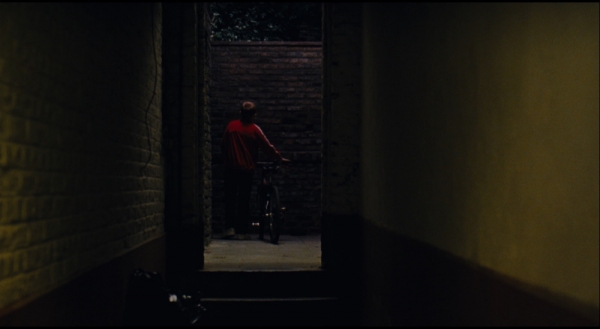
3. The Kid with a Bike
Music almost never occurs in the films of Jean-Pierre and Luc Dardenne, but in The Kid with a Bike the filmmakers play a few stringed chords from the adagio movement of Beethoven’s fifth piano concerto over the agitated movements of their young protagonist, Cyril (Thomas Doret). These simple, unhurried notes are not allowed to achieve resolution, and instead brim with a tension that matches Cyril’s restless plight: left in the care of a state foster home, he scratches, kicks, bites, and races his bike to the father who abandoned him (Jérémie Renier). Along the way, he literally tumbles into the arms of Samantha (Cécile de France), a hairdresser, and though she takes him in without question, the momentum of his troubles hardly abates. Like the music, the play of this pair—the fierce, frantic boy and the woman who calmly, openly accepts him (“You can hold me but not so tight,” she offers when he crashes into her)—is the structural dissonance that propels the film’s uncompromising, unsentimental drama. In taut and frequent close-ups, Alain Marcoen’s camera tracks every one of Cyril’s disappointments and mistakes, and in equal measure, it keeps pace with Samantha’s efforts to rescue him, though these small and often intensely physical battles sometimes come at great cost. Resolution eventually arrives, once the screen goes black, and the Beethoven piece is allowed to play out. But perhaps it was there all along, a possibility present in every struggle, every bruise we’re given to feel and to suffer, a sound we could hear even without the music playing. —GY

4. Tabu
It’s been said that watching other people cry can be a trigger for tears; that could be one of the reasons that Miguel Gomes’s Tabu is the only film that I saw in 2012 that activated those particular glands. No less than Tom Hooper, Miguel Gomes believes in the power of close-ups, except when he zeroes in on the rapidly welling eyes of Pilar (Teresa Madruga) as she listens to a Spanish-language cover of “Be My Baby”—which is where I got a bit misty—it resonates as a deeply private, mysterious moment, whereas the quivering lips and thrusting uvulas captured so intimately in Les Misérables’ various actorly money shots are playing to the back row. Tabu is awash in such furtive sensations, but Gomes isn’t a coy or withholding filmmaker. Starting with the boldly stylized, unabashedly metaphorical prologue—about a heartbroken explorer devoured by and subsequently reincarnated as a ghostly crocodile—he gives the audience everything it needs to interpret his bifurcated tale of loneliness, longing, and cultural inheritance. Even if you’re not immediately certain how deeply the first segment in contemporary Lisbon connects to the extended flashback in colonial Africa, the confidence of the filmmaking—quietly self-effacing in part one and startlingly expressionistic in part two—is persuasive enough to assuage any doubts. Like so much great cinema, including the Robert Flaherty/F. W. Murnau collaboration from which Gomes took his title and a portion of his creative inspiration, Tabu isn’t crying out to be decoded mathematically. But it’s part and parcel of the film’s reiterative conception that certain things make more sense when remembered in the context of a later scene—i.e. Pilar’s tears, which come to mind during another cover of “Be My Baby.” That song’s syncopated drum-kit intro functions as this quasi-musical's heartbeat. And by doubling down on its primal power, Gomes got me—and probably a lot of other people—on the rebound. He seconds that emotion, and so do we. —AN
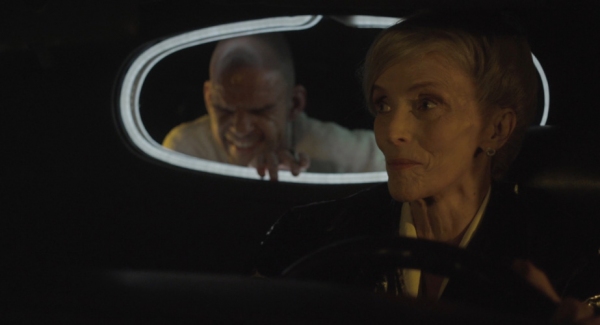
5. Holy Motors
In one sense, Leos Carax’s Holy Motors is cinema as idiosyncratic self-exploration. As established by a seductively somnambulant opening sequence in which the director himself passes through magical hotel room walls and eyes stalking black panthers from the balcony of the world's sleepiest movie theater, the film is at once confession, id fetish, and cri de coeur. But it turns out that inside of Carax is a world that also encompasses our own; protagonist Oscar’s episodic limousine drive into the night is a deep dive into collective consciousness, as each sequence toys with sensations half-remembered and half-feared, exploring the psychic building blocks of genre. (Oscar is like Melville’s Confidence Man as tragic figure, a melancholic, Christlike shape-shifter absorbing rather than reflecting our anxieties.) Most obviously the film is a lament for and stealth celebration of what we used to call—or might still find useful to call, regardless of our digital format of choice—film. From early cutaways to Etienne-Jules Marey’s motion experiments to a midfilm gripe-fest about the diminishment of movie cameras to an absurdly moving send-off by soon-to-be-anachronistic limousines, Holy Motors earns the eulogizing tone of its title. But if the machinery of film is dying, Carax’s inexhaustibly inventive marvel is proof of the form’s spectral persistence. Now the ghost is the machine, and its force remains considerable. The genius of Holy Motors is its ability to be both utterly egotistical and almost unbearably self-deprecating, equally at home in navel-gazing and piss-taking. There’s tragedy in that genius, being that it’s at least partly born of the filmmaker’s two-decade desert walk through forestalled projects and post-enfant-terrible reputation assassination. With all apologies to Pete Townshend, in Holy Motors the punk has become one with the godfather. Which might be why, for all its rage and freighted umbrage, and despite whatever indignities were accrued along the way to completion, Holy Motors is the work of a free man. You can get on, get off, celebrate or scrutinize, take or reject any number of things in the film—it is, by its raggedly grafted-together nature, imperfect—but it’s also exactly what it wants and needs to be. —EH

6. The Master
The epic reach of Paul Thomas Anderson’s period drama comes from how he uses one quintessentially American phenomenon (cultism) to illustrate another, much graver one. America’s postwar uncertainty was ripe for the parasitical ideas peddled by the likes of Edward Bernays and Ayn Rand which, far from providing Thetan punchlines and historical distance, were swallowed whole by an unquestioning intellectual establishment and came to shape American life forever. Deploring the iniquity of forcing answers (to questions that don’t need asking) down our throats, Anderson switches the predefined roles of his protagonists, making Philip Seymour Hoffman’s Lancaster Dodd (supposedly a charismatic genius) into a febrile bellicose huckster and Joaquin Phoenix’s Freddie Quell (supposedly an addict and a drifter) into an artist—of photography and sculpture but also mixology: he concocts hooch with developing fluid and paint stripper. In a lacerating middle section, Dodd, driven by ambition and love, submits the idiot savant Quell to torture. The component parts of this callous, fractured masterpiece don’t hide themselves in the whole—sumptuous production design by Jack Fisk ties The Master in with its American cousins The Tree of Life and Mulholland Drive; Johnny Greenwood’s broken, Messiaen-ic score provides bursts of respite, strangled snatches of beauty in a landscape of intellectual decay. And as Quell, Phoenix is simply overwhelming. Blending Chaplin’s physicality with De Niro’s stoicism, his performance makes definitive Anderson’s loosening of Scorsese’s grip on the position of chronicler-in-chief of the American male. —JA
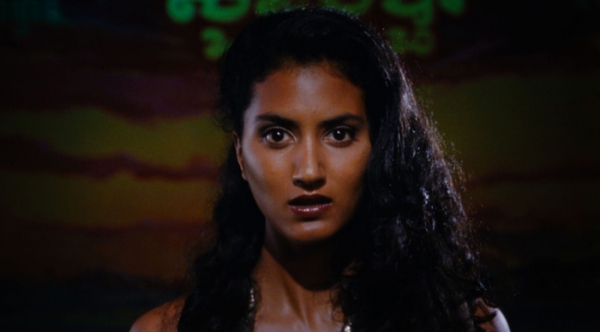
7. Almayer’s Folly
In the opening of Chantal Akerman’s Almayer’s Folly, a Southeast Asian lounge lizard in a sequined suit is unceremoniously stabbed, mid-croon, after which the camera zooms in on one of his backup singers. She begins to sing Mozart’s “Ave Verum Corpus” with hollow-eyed emotion, as if in a trance. The singer is Nina (Aurora Marion), the product of an acrid relationship between Belgian fortune-seeker Almayer (Stanislas Merhar) and a local in late 19th-century Malaysia, and the story of her gradual dissociation from a world that can’t categorize her, and her father’s descent into greed-driven madness is full of many such moments of bizarre beauty and intellectually anchored pathos. Akerman’s treatment is perhaps more hypnotically sedate than the Joseph Conrad novel it adapts, but no less painful or powerful for it, and she draws on the book’s grand literary archetypes—the father so desperate for success he is clearly doomed to fail; the troubled daughter who follows a low-level criminal simply because he wants her, and is her best and only option out of a home that has felt forever in decline—allowing even those unfamiliar with this genre or region to feel deeply the loose narrative and its heady themes of identity and colonialist society, still relevant today as globalism erodes cultural distinction. The sense of longing and the lack of belonging, the constantly shifting understanding of racial identity, and the specter of failure hang over the characters in a way that’s as oppressively palpable as the musty humidity over Almayer’s house, a tropical dream turned swampy, nightmarish ruin. Delicate and disturbing, Akerman’s film uses a specific time and place to shed light onto the timeless, place-less dark corners of human nature. —FZ

8. The Turin Horse
A terminal work in seemingly every respect—an apocalyptic film set in the middle of nowhere, declared by its living-legend director to be his final feature—The Turin Horse considers nothing less than our incremental natural end, as over the course of several days a coachman and his daughter find themselves stranded in their house on the far side of a hillock, sustained only by a dwindling store of potatoes that the woman boils to a scald. It’s no accident that Béla Tarr’s most austere film since Damnation also happens to be the one that’s the most firmly grounded in the muck of reality—drudgery unleavened by the barroom stumbling of Sátántangó or Werckmeister Harmonies, in which the elemental mysteries take on a notably more mesmeric cast. Using a historical footnote (about Nietzsche, who after seeing a horse whipped spent the last decade of his life “silent and demented”) as a point of departure, Tarr, codirector Agnes Hranitzky, and cowriter Laszlo Krasznahorkai imagine the path’s other fork, following the animal’s owner home after that fateful encounter, to a harsh day-to-day made increasingly untenable in the teeth of a howling wind that refuses to let up. In the Hungarian master’s signature black-and-white shots—large panes of duration, each one a clear window onto a murky existence—you can practically feel the wind eroding the earth’s surface, the harbinger of death’s foreclosure of possibilities. —BM
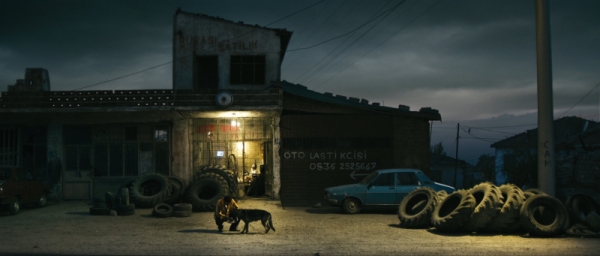
9. Once Upon a Time in Anatolia
An existential morality play moonlighting as a methodical police procedural, Nuri Bilge Ceylan’s magisterial Once Upon a Time in Anatolia is, at its fundamental level, simply an enrapturing, quietly devastating account of humanity’s inability to wrest closure from tragedy, and a metaphysical treatise on the precarious harmony of the environment and the terra firma of the flesh. Ceylan masterfully employs and expands upon an array of cinematic and postmodern devices to transform a terrestrial murder mystery (an unidentified body has been buried amidst the expansive, barren countryside steppe of western Turkey) into something far grander and graver than a summary could disclose. What he strives for and eventually arrives at is a more basic truth: though this is represented narratively via societal semantics, it is reflected in broader cinematic terms as a universal malaise, a culture bled of morality but wracked with guilt at the consequential evidence against the criminal and common alike. Synthesizing themes of social disenfranchisement recognizable from Antonioni’s structuralist period with the metacinematic allusions of Abbas Kiarostami’s Koker trilogy and, more specifically, his reconciliatory The Wind Will Carry Us (acknowledged directly in one of Anatolia’s most breathtaking visual asides, in which an apple rolls casually down a small hill and into a stream, nodding to a similar shot of a tree branch in Kiarostami’s masterwork), Ceylan effectively subsumes his influences in a seamless realization of his ever-widening aesthetic palette. Less indigenous fable than ethical allegory, Once Upon a Time in Anatolia pushes a medium otherwise known for its everyday functionality that much further into the unknown. —JC

10. Lincoln
Among the many virtues of Steven Spielberg’s Lincoln—which include towering performances from Daniel Day-Lewis and Sally Field, Tony Kushner’s rich and multivalent script, and Janusz Kaminski’s enveloping, tactile light schemes—what may be perhaps the film’s chief virtue has gone largely unremarked upon. In a time when popular biographical historical filmmaking has been so degraded as to revolve largely around simplistic narratives of individual self-actualization (see: The King’s Speech), it’s a genuine pleasure to encounter a film set in the past acutely concerned with matters of process and fascinated by the machinery of how history gets made. Lincoln is not some mushy life-spanning biopic of our sixteenth president; it is instead heir to a class of film never truly reputable enough to have been actively missed; think of the forties Hollywood films Dr. Ehrlich’s Magic Bullet or Edison, the Man, which sprinkle biographical detail over narratives deeply invested in tracking their famous protagonists’ often obsessive quest to achieve a single goal, say, the invention of vaccinations, the creation of light bulbs, or the cessation of slavery. This kind of historical filmmaking may be the polar opposite of the ecstatic mythologizing of Terrence Malick’s The New World, but it’s the proper opposite and no less valuable a strand in cinema’s long, often tortured relationship to historical representation. Calling Lincoln an heir to these films perhaps does it a disservice however, for, in the film’s often misunderstood prologue and following dream sequence, Kushner and Spielberg openly acknowledge their movie’s genial relation to the actuality of the 13th Amendment’s passage, theater, and cinematic history itself—and by announcing upfront that they’re employing the tools afforded by the arts to re-create past events, they let us know that their aims are somewhat closer to folklore than strict reportage. There’s an easy brilliance to Lincoln’s overture that makes the barn-burning two-plus hours of speechifying and political manipulations that follow the year’s best, most pleasurable bonus. —JR
